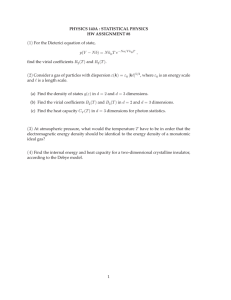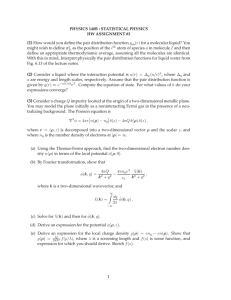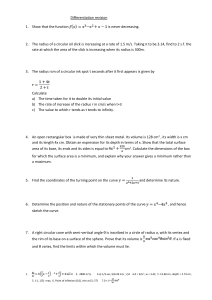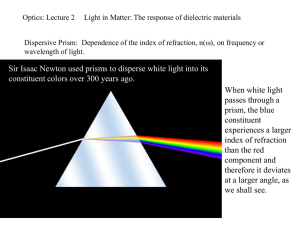(1)
advertisement
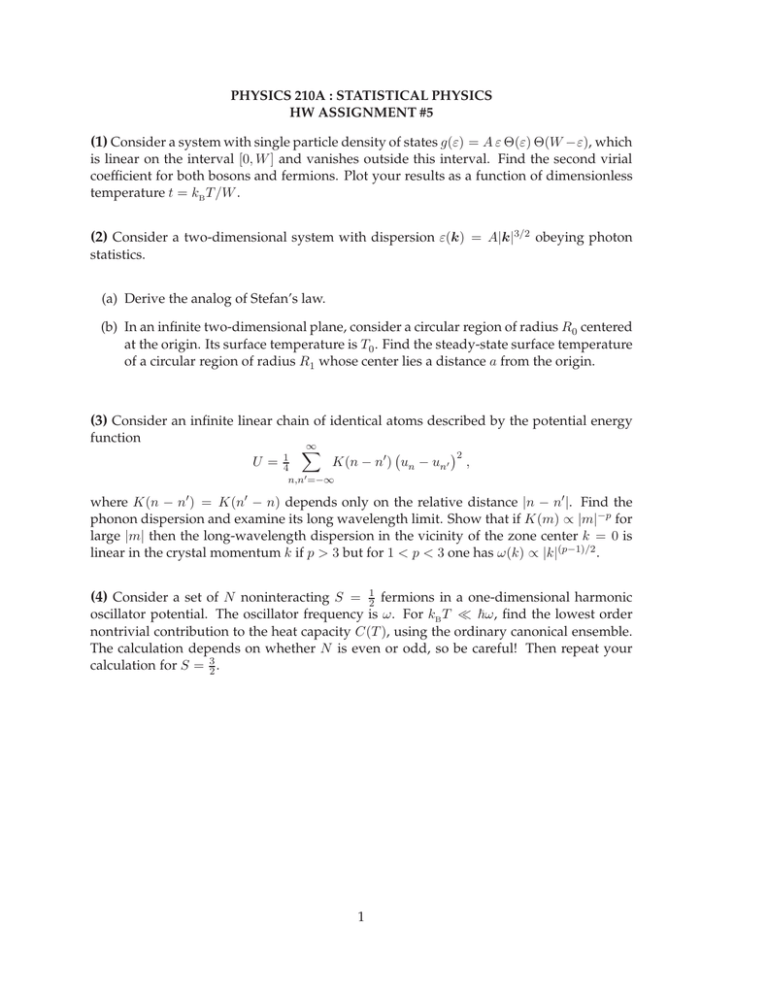
PHYSICS 210A : STATISTICAL PHYSICS HW ASSIGNMENT #5 (1) Consider a system with single particle density of states g(ε) = A ε Θ(ε) Θ(W −ε), which is linear on the interval [0, W ] and vanishes outside this interval. Find the second virial coefficient for both bosons and fermions. Plot your results as a function of dimensionless temperature t = kB T /W . (2) Consider a two-dimensional system with dispersion ε(k) = A|k|3/2 obeying photon statistics. (a) Derive the analog of Stefan’s law. (b) In an infinite two-dimensional plane, consider a circular region of radius R0 centered at the origin. Its surface temperature is T0 . Find the steady-state surface temperature of a circular region of radius R1 whose center lies a distance a from the origin. (3) Consider an infinite linear chain of identical atoms described by the potential energy function U= ∞ X 1 K(n 4 ′ n,n =−∞ − n′ ) un − un′ 2 , where K(n − n′ ) = K(n′ − n) depends only on the relative distance |n − n′ |. Find the phonon dispersion and examine its long wavelength limit. Show that if K(m) ∝ |m|−p for large |m| then the long-wavelength dispersion in the vicinity of the zone center k = 0 is linear in the crystal momentum k if p > 3 but for 1 < p < 3 one has ω(k) ∝ |k|(p−1)/2 . (4) Consider a set of N noninteracting S = 1 2 fermions in a one-dimensional harmonic oscillator potential. The oscillator frequency is ω. For kB T ≪ ~ω, find the lowest order nontrivial contribution to the heat capacity C(T ), using the ordinary canonical ensemble. The calculation depends on whether N is even or odd, so be careful! Then repeat your calculation for S = 32 . 1
